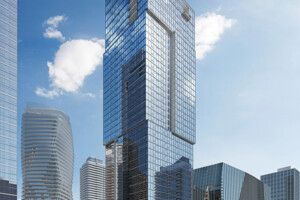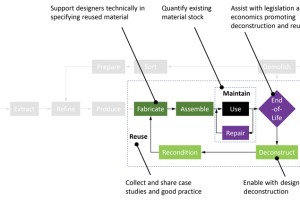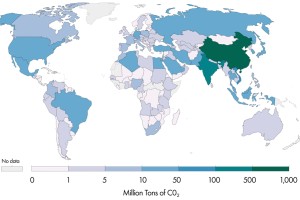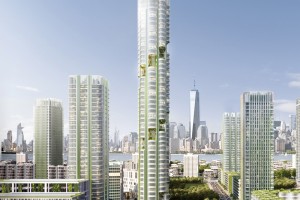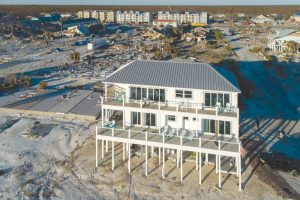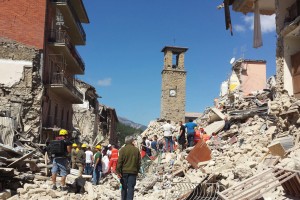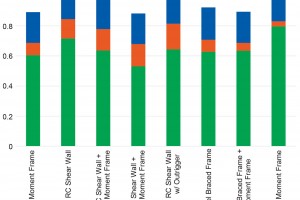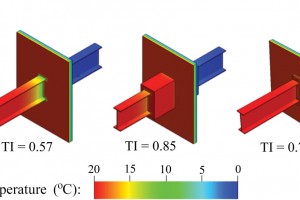According to the World Meteorological Association, 2011-2020 was the warmest decade on record. The current decade is expected to be even warmer. Climate change is real; excess atmospheric carbon is a primary cause, and reducing it is the responsibility of all. That includes structural engineers, who can play a key role in reducing the carbon footprint of buildings and other structures.
…Review Category : Structural Sustainability
Implementing Circular Economy Principles in Structural Engineering Practice
Last year, the Intergovernmental Panel on Climate Change (IPCC) stated: “It is unequivocal that human influence has warmed the atmosphere, ocean, and land… Observed warming is driven by emissions from human activities. The scale of recent changes across the climate system as a whole are unprecedented over many centuries to many thousands of years.” Of course, these emissions are a product of global society as a whole. However, the building construction industry has been a significant emissions contributor and material user; approximately 40% of global material extraction is for housing, construction, and infrastructure. As structural engineers, we have a fantastic opportunity to be impactful leaders in reducing material use and emissions.
…Compliance Beyond the Code
As the most widely used manufactured material on the globe, concrete is one of the materials that may be considered part of society’s foundation. Concrete can be a highly durable, resilient, and affordable material in the built environment, supporting sustainable, economic, and social development when properly proportioned. In addition, concrete can be molded into nearly any shape at the job site, bringing versatility to construction and making concrete a highly popular construction material.
…The concept of Urban Sequoia (Figure 1) combines optimized structural design with low embodied carbon materials, efficient construction, and carbon-capturing technologies. These carbon-capturing approaches allow buildings to start their service life with an ultra-low embodied carbon and sequester additional carbon over time, becoming net carbon negative. The structural approach to Urban Sequoia incorporates nature-based, living materials that embody far less carbon than conventional structural solutions while absorbing additional carbon over time. When combined with non-structural systems such as exterior wall systems that incorporate biomass and algae and technologies including Direct Air Capture (DAC), tall buildings could absorb three to five times the amount of carbon emitted at the time of construction.
…A New Benchmark for Reducing High-Rise Construction Costs and Carbon Footprints
How do you successfully design and construct a high-rise residential tower, being mindful of costs while also reducing its environmental impacts? This was a challenge posed to the design team, contractor, and subcontractors behind Brookfield Properties’ 960 W 7th Street project in downtown Los Angeles, California.
…Consider the broader meaning of resilience: the ability of a person or system to adapt to shock and return to a “new normal.” …
What is the Role of the Structural Engineer?
Disasters are occurring with increasing severity and frequency [NOAA 2018]. Communities are also shifting design objectives to consider building functionality. As the severity increases and the design objective shifts, design standards generally rise with higher strength levels and stricter detailing requirements. …
Considerations over a Building’s Service Life
The structural engineering design profession needs to carefully reconsider design approaches. Embodied carbon of structural systems in buildings has been established to be a considerable influence on the detrimental environmental impact of structures. Embodied carbon is defined as the CO2-equivalent emissions into the atmosphere caused by the production of a material, product, or system. Embodied carbon impacts of a building’s structural system are primarily associated with the different life cycle stages: material extraction, manufacturing and production, construction, damage and repair during service life, and end-of-life considerations. …
Recent Research Findings
Thermal bridges occur when a component of high thermal conductivity causes excessive heat flow through the building insulation envelope. A large variety of conditions can cause thermal bridging, including cladding (shelf angles, grillage posts, canopy beams), metal wall studs, window mullions, and poor corner detailing. …

